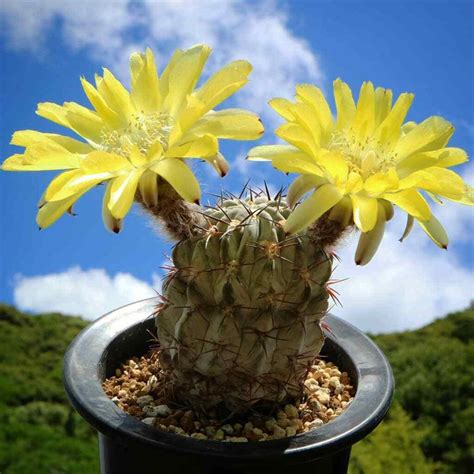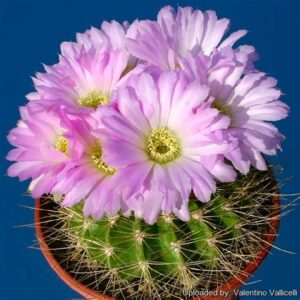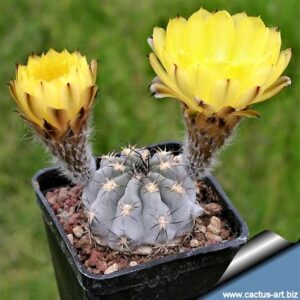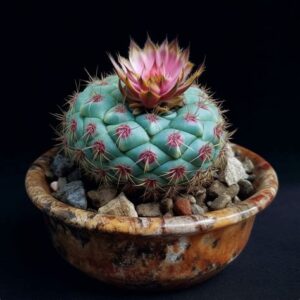Acanthocalycium munitum is a captivating species of cactus that not only intrigues enthusiasts but also holds a prominent place in the diverse world of succulents. Native to Argentina, this ornamental wonder is celebrated for its vividly colored blooms and unique morphological features. Understanding how to nurture this robust plant is essential for both novice and experienced cacti caretakers.
The following comprehensive care guide will unravel the nuances of Acanthocalycium munitum, enabling you to cultivate a thriving specimen in your home or garden. Each section will explore the essentials — from ideal growing conditions to pest management — providing a holistic perspective on the stewardship of this remarkable cactus.
The Allure of Acanthocalycium Munitum: A Brief Overview
Acanthocalycium munitum is characterized by its globular to cylindrical shape, often reaching up to 12 inches in height. Its spines are noteworthy, presenting a striking juxtaposition against its green body, which can exhibit varying shades depending on the environment and cultivation practices. Flowering typically occurs in the warmer months, rewarding patience with stunning pink to red blooms that emerge from the plant’s crown, creating a visual spectacle.
This species serves as a prime example of nature’s ingenuity in adaptation. The ability to thrive in arid conditions with minimal water makes it an excellent choice for xeriscaping and indoor cultivation. However, cultivating Acanthocalycium munitum is not without its challenges. A comprehensive understanding of its care will yield dividends in the form of a healthy, flourishing plant that captivates all who behold it.
Environmental Needs: The Essential Habitat
To ensure the well-being of Acanthocalycium munitum, it is paramount to replicate its natural habitat as closely as possible. This cactus flourishes under conditions that mimic its native environment in Argentina. Let’s delve into the key environmental parameters vital for optimal growth.
Light Requirements: Sunlight, the Life Source
Acanthocalycium munitum thrives in bright, direct sunlight. Ideally, it should receive at least six hours of sunlight daily. Insufficient light can lead to etiolation, where the cactus stretches towards light sources, affecting its aesthetic appeal. If you are cultivating this species indoors, positioning it near a south- or west-facing window will ensure ample light exposure. However, during the peak of summer, some protection from the scorching midday sun can prevent sunburn, a common affliction among cacti.
Temperature Tolerance: A Dichotomy of Extremes
This resilient cactus exhibits remarkable adaptability to temperature variations, thriving within a range of 50°F to 100°F (10°C to 38°C). Acanthocalycium munitum is frost-sensitive; temperatures below 20°F (-6°C) can cause substantial damage or death. Therefore, maintaining indoor temperatures above this threshold during winter months is crucial. Conversely, it can tolerate high temperatures in summer as long as it has sufficient hydration and ventilation.
Soil Composition: The Foundation of Health
The right soil mix is pivotal for the health of Acanthocalycium munitum. This species prefers well-draining soil that mimics its habitat. A commercial cactus mix with added perlite or coarse sand can create an ideal environment. The mix should promote aeration while simultaneously allowing the roots to access moisture without becoming waterlogged. Heavy soils can cause root rot, a detrimental condition that can quickly spell disaster for your cactus.
Watering Standards: The Delicate Balance
Establishing a balanced watering routine is paramount. Acanthocalycium munitum should be watered thoroughly during the growing season, typically from spring to autumn. It is advisable to allow the soil to dry out completely between waterings, as this species is drought-resistant. Overwatering, especially in cooler months, can lead to root rot and other complications. Always ensure that your pot has drainage holes to facilitate excess water escape.
Fertilization Habits: Nourishment for Vitality
Fertilization plays a significant role in promoting healthy growth and vibrant blooms. During the active growing season, a balanced, diluted cactus fertilizer can be applied every four to six weeks. This ensures that the plant receives essential nutrients without overwhelming its system. It is prudent to avoid fertilizing during the winter months, as the plant enters dormancy and does not require additional nutrients during this period.
Propagation Techniques: Cultivating New Life
For those looking to expand their cacti collection or share the beauty of Acanthocalycium munitum with friends, propagation is an exciting endeavor. This cactus can be propagated through seeds or offsets.
Seeds: The Patient Path
Starting from seeds is rewarding but requires patience. The seeds should be sown in well-draining soil and kept in warm, bright conditions to germinate. Moisture is crucial during this stage, but care should be taken to avoid excessive wetness. Once seedlings develop their first true spines, they can be carefully transplanted into individual pots.
Offsets: The Quicker Route
Offsets, or pups, are another method of propagation. These small clones can be removed from the mother plant once they have developed roots. Allowing cut areas to dry for a few days before planting in soil will reduce the risk of rot. This method is generally quicker and more effective for enthusiasts eager to obtain new specimens.
Pest Management: Protecting Your Green Investment
Despite their hardiness, Acanthocalycium munitum can be susceptible to common pests, such as mealybugs and spider mites. Regular inspections of your cactus are crucial for early detection.
Identification and Treatment
Mealybugs can typically be identified by their fuzzy, white appearance, often congregating in the crevices of the cactus. A cotton swab dipped in rubbing alcohol effectively eradicates these pests. Spider mites, conversely, may be harder to detect, often leaving a fine webbing on the plant. Increasing humidity and wiping the plant down with water can help alleviate infestations.
To prevent pests, maintain an optimal growing environment and avoid overcrowding plants, which can create a haven for undesirable species.
Conclusion: Embracing the Art of Cactus Care
Caring for Acanthocalycium munitum transcends mere plant husbandry; it is an art form that nurtures a deeper appreciation for nature’s wonders. As fundamental as the soil or the light may seem, each parameter interweaves to create a tapestry of life. Engaging with this captivating cactus will promise both challenges and rewards, inviting enthusiasts to marvel at the subtle beauties of the plant kingdom.
By mastering the intricate requirements of Acanthocalycium munitum, you embark on a journey that not only enhances your botanical repertoire but also fosters a profound connection with this extraordinary species. In doing so, you will unlock the mysteries of cacti and the serenity they can bring to your living space.





Leave a Comment